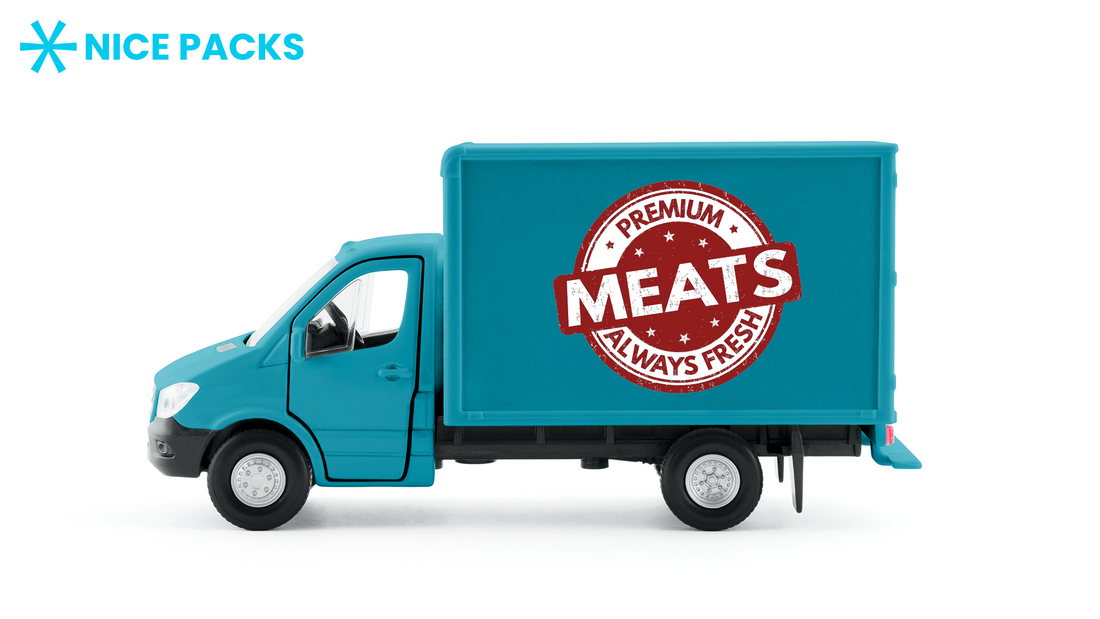If you're in the meat business, offering shipping services can be a powerful way to expand your customer base and boost sales. Customers appreciate the convenience of having high-quality, fresh meat delivered to their doorstep. But is it possible to ship meat overseas while maintaining its quality? Scroll down below to find out.
Is It Possible to Ship Meat?
Credit: Envato Elements/ FabrikaPhoto
Yes, it is indeed possible to ship meat, but there are specific rules and regulations that govern such shipments. These regulations vary depending on factors such as the type of meat being shipped, its source, the intended destination, and the chosen shipping company.
In the United States, the shipment of meat is closely monitored and regulated by organizations such as the USDA (United States Department of Agriculture), IATA (International Air Transport Association), and the FDA (Food and Drug Administration). These agencies have established guidelines, particularly for interstate and international shipments of meat. It is important to conduct thorough research on these laws or seek guidance from a professional before attempting to send a meat package.
How to Ship Meat
Shipping perishables like meat is a tricky business due to the possibility of spoilage. To ensure that your package arrives safely to your customer, follow the steps below:
1) Freeze the Meat
Credit: Envato Elements/ stockfilmsstudio
Before you can ship meat, it must be frozen. This ensures that the meat stays cold during shipping and prevents spoilage. Depending on the size and type of the meat, it may take several hours to a day to fully freeze. Plan accordingly.
2) Vacuum Seal
Credit: Envato Elements/ leungchopan
After freezing, it's recommended to vacuum seal the frozen meat. Vacuum sealing removes all the air around the meat, which helps maintain its quality and reduces the risk of freezer burn. Vacuum sealing machines are generally available at reasonable prices and are easy to use.
If you do not have a vacuum sealer, use a high-quality freezer bag. Try to remove as much air as possible from the bag before sealing it. This can be done by submerging the bag in water up to the opening, which forces out the air, and then sealing it.
3) Use Insulated Shipping Containers
Credit: Envato Elements/ dezign56
Insulated shipping containers, often made from expanded polystyrene foam, are designed to maintain the temperature of the contents. These containers provide an insulated environment that reduces heat transfer, thereby helping to maintain the desired temperature for your meat. They come in various sizes, so choose one that will accommodate your meat and the required amount of refrigerants. If you do not have an insulated container, you can always use a styrofoam cooler.
4) Pack with Ice Packs or Dry Ice
Credit: Envato Elements/ vsoldatov7
To keep the shipment cold, it is crucial to pack frozen meats with either ice packs or dry ice. Ice packs are a reusable option and do not have the same shipping restrictions as dry ice. However, for longer shipping durations, dry ice is more effective due to its lower temperature.
If you opt for ice packs, start by lining the bottom of the container with them. Next, place the meat on top of the ice packs and cover it with additional ice packs to maintain a consistent temperature. When using dry ice, it is essential to handle it with gloves to prevent burns. To avoid excessively freezing the meat, ensure that the dry ice does not come into direct contact with it. As an alternative to dry ice, consider using dry ice packs. These packs do not contain actual dry ice, eliminating the handling risks while still providing low temperatures similar to dry ice.
5) Pack the Meat Tightly
Credit: Envato Elements/ axelbueckert
To minimize shifting and maintain a uniform temperature, pack the meat as tightly as possible. Any extra space in the container should be filled with more ice packs, dry ice, or packing peanuts. The aim is to keep the meat firmly in place and fully surrounded by the cooling element.
6) Close and Secure the Container
Credit: Envato Elements/ poungsaed_eco
Once everything is packed, close the container tightly. If the container has a lid, make sure that it is secured firmly. If it does not, you might need to use packing tape to seal it shut. To provide an extra layer of security and insulation, consider placing the entire container inside a larger corrugated box filled with packing material.
7) Label the Package
Credit: Envato Elements/ zGel
Clearly labeling your package is important for both the shipping company and the recipient. Mark it as "Perishable" and "Keep Refrigerated" to alert everyone handling it that it contains temperature-sensitive items.
If you have used dry ice in your shipment, it is important to include additional labeling. Clearly indicate on the box that it "Contains Dry Ice" and specify the weight of dry ice used.
8) Choose the Right Shipping Company
Credit: Envato Elements/ biasciolialessandro
Once the meat is properly packed, the next step is to plan the shipment. It is important to note that not all shipping companies handle frozen meat shipments. Due to its delicate nature and specific handling requirements, frozen meat requires a shipping service that can ensure proper packaging, handling, and expedited delivery to maintain its freshness.
Companies such as FedEx, UPS, DHL, and even USPS (United States Postal Service) offer services tailored to shipping perishable items like meat. When selecting a shipping company, it is essential to inquire about their policies and packaging requirements specifically for shipping frozen meat. Additionally, ensure that the chosen company offers services like priority mail express to maintain the quality of the meat during transit. If you have substantial shipping volumes, some shipping companies may even provide discounts or special rates, so it's worth exploring those options as well.
9) Opt for Express Shipping
Credit: Envato Elements/ maxxyustas
Once your meat is packed and ready for shipping, choose the fastest shipping option available. Usually, an overnight delivery is the best choice to ship frozen meat. Additionally, consider shipping at the beginning of the week. This will prevent your package from sitting in a warehouse over the weekend, reducing the risk of spoilage.
Summary
Shipping meat can be a profitable business strategy, enabling you to provide convenience to customers and expand your market reach. While it requires careful planning and a bit of an investment in packaging and shipping, the returns can be significant. By following the steps outlined above, you can confidently ship your meat products and ensure they arrive in the best possible condition.
Are you looking for reliable packaging solutions for shipping perishable goods? Check out Nice Packs! Our high-quality dry ice packs and insulated shipping containers are designed to maintain the perfect temperature for your valuable cargo. Shop with us today.












